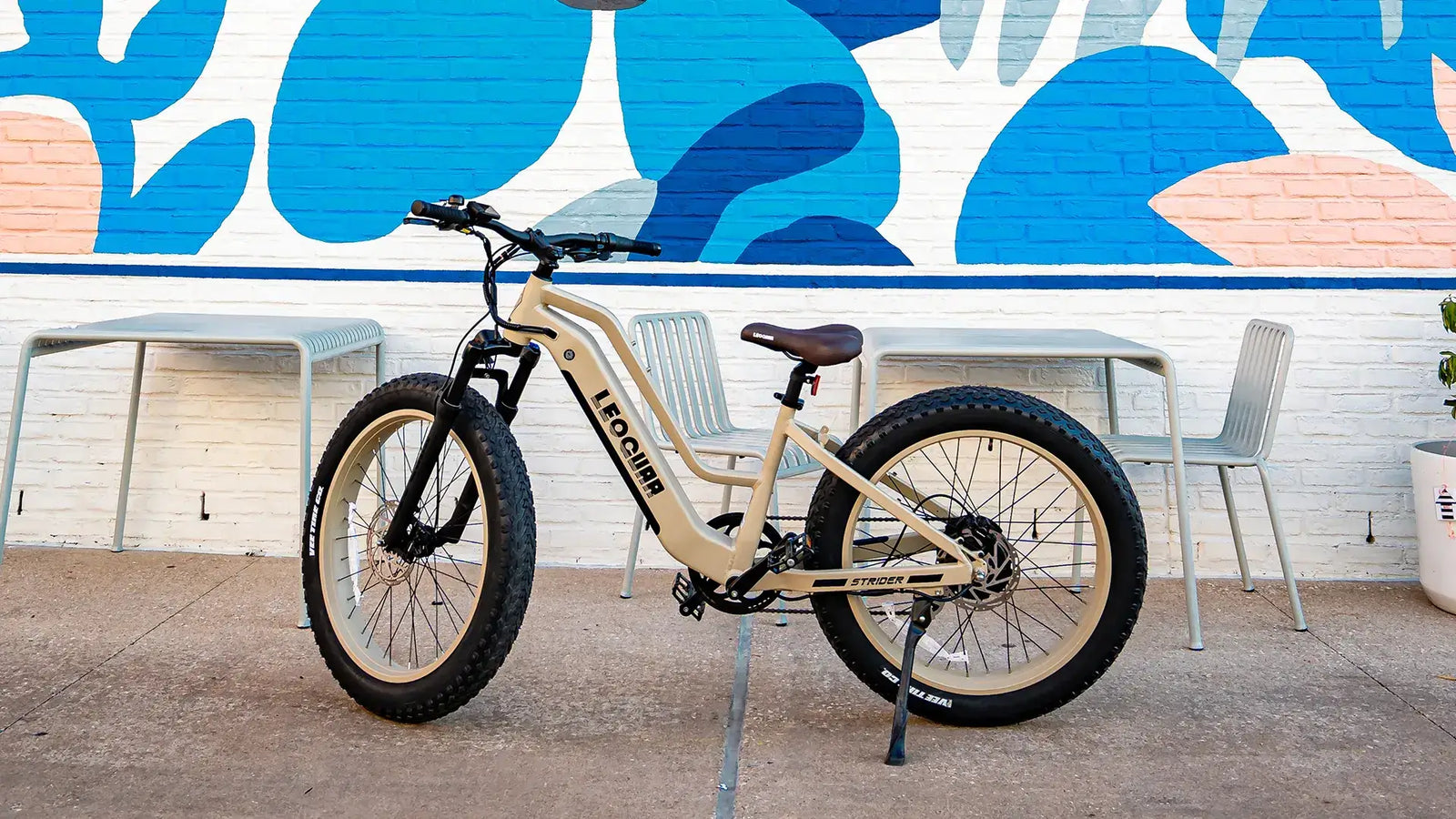
Electric Bike Average Speed: What to Expect (km/h and mph Compared)
The Quick Answer
Let's get straight to the point. For a typical ride that includes stopping for traffic, climbing hills, and cruising on flats, a realistic electric bike average speed is between 12-20 mph (19-32 km/h). It's important to understand that this is your real-world average, not the bike maximum assisted speed.
The number you see advertised, like 20 mph or 28 mph, is the legal and technical limit at which the motor stops providing assistance. Your actual journey's pace will almost always be lower. Here's a quick breakdown of what you can expect:
- Urban Commuting: 13-16 mph (21-26 km/h)
- Leisurely Trail Riding: 16-20 mph (26-32 km/h)
- Hilly Terrain: 10-14 mph (16-22.5 km/h)
In this guide, we'll dive deep into real-world riding scenarios, explore the key factors that determine your speed, explain how e-bike laws set the limits, and see how e-bikes stack up against traditional bicycles.
Electric Bike Average Speed vs Top Speed: Know the Difference
One of the most common points of confusion for new e-bike riders is the difference between average speed and top assisted speed. Getting this right helps set realistic expectations for how your bike will perform on a daily basis. Think of it like a car.
Your car's speedometer might go up to 140 mph, but your average speed during a city commute, with all its traffic and red lights, is probably closer to 25 mph. The same principle applies directly to electric bikes. Top Assisted Speed is a fixed number determined by your e-bike's class and legal regulations.
It's the maximum speed at which the motor will help you. If you go faster than this, it's because of your own pedaling power or gravity helping you downhill. Average Riding Speed is a dynamic figure that reflects the reality of your entire ride.
It's calculated by taking the total distance you traveled and dividing it by your total time, which includes slowing for corners, stopping at intersections, and navigating around obstacles. This table makes the distinction clear:
| Feature | Top Assisted Speed | Average Riding Speed |
|---|---|---|
| Definition | The speed where the motor cuts off | The overall pace of your entire journey |
| Determined By | Legal regulations & e-bike class | You, terrain, traffic, stops, etc. |
| Example | 20 mph (32 km/h) | 14 mph (22.5 km/h) |
Understanding this difference is key to appreciating what an e-bike truly offers: not necessarily blistering top speed, but a higher, more consistent, and more easily maintained average speed.
Real-World Electric Bike Average Speed Scenarios
Generic numbers are helpful, but what does an electric bike average speed look like in the real world? Based on our experience riding and testing various e-bikes, here are some tangible scenarios that reflect what you'll likely encounter.
The Urban Commuter
Imagine a 5-mile (8 km) commute through a busy city center. You're on a Class 2 commuter e-bike with a 20 mph assist limit. The route has dedicated bike lanes, but you also face a dozen traffic lights and moderate stop-and-go traffic.
Between lights on open stretches, you'll easily hit that 20 mph (32 km/h) limit and feel like you're flying. However, every stop, slowdown for a pedestrian, and wait at a red light brings your overall average down. For this type of ride, a realistic average speed is 13-16 mph (21-26 km/h).
The real win isn't breaking speed records; it's the predictability. Your commute time becomes incredibly consistent because hills and fatigue are no longer major factors.
The Suburban Trail Rider
Now picture a weekend ride on a 10-mile (16 km) paved suburban bike path. The trail is mostly flat, wide, and has very few intersections or interruptions. You're riding a Class 1 or Class 3 e-bike.
In this environment, you can ride for long, consistent periods without stopping. Your speed will hover very close to the maximum assisted speed of your bike. If you're on a Class 1 bike, you'll comfortably maintain a pace just shy of 20 mph.
Here, your electric bike average speed will be much higher, typically in the range of 16-20 mph (26-32 km/h). It feels effortless and allows you to cover significant distances without exhausting yourself.
The Hill Climber
Let's tackle a route with challenging terrain: a winding country road with several moderate to steep hills. On a traditional bike, your speed would plummet to a crawl on the inclines.
With a mid-drive motor ebike, the goal isn't to fly up the hill at 20 mph. The magic is in maintaining momentum. Instead of grinding to a near halt, you'll be able to power up those same hills at 10-12 mph with a manageable level of effort.
While your overall electric bike average speed for the hilly route might be lower, around 10-14 mph (16-22.5 km/h), the feeling of empowerment is immense. You conquer hills that would have previously defeated you.
The Food Delivery Rider
For a delivery rider, time is money. This scenario involves navigating a dense urban grid as efficiently as possible. The rider needs a bike that can accelerate quickly from a stop and keep pace with city traffic.
A Class 3 e-bike, with its 28 mph (45 km/h) assist limit, is the ideal tool for this job where local laws permit. It allows the rider to safely merge and flow with cars moving at 25 mph. Even with frequent stops to pick up and drop off orders, the higher top-end assist allows for a very respectable average speed of 15-18 mph (24-29 km/h) over a shift.
7 Key Factors That Affect Electric Bike Average Speed
Your e-bike's average speed isn't a single number; it's the result of a complex interplay between your bike, you, and your environment. Understanding these factors will help you know what to expect and how to maximize your performance.
The E-Bike Itself
E-Bike Class is the most significant factor determining your top assisted speed. E-bikes are legally categorized into classes that dictate how fast the motor can help you. As explained in a guide to e-bike classes, a Class 1 or 2 bike will stop assisting at 20 mph, while a Class 3 will assist up to 28 mph.
This legal ceiling is non-negotiable for stock bikes. Motor Power (Watts) doesn't necessarily mean a higher top speed, but it does affect how quickly you get there. A higher-wattage motor (e.g., 750W vs. 250W) will provide stronger acceleration and help you maintain speed more easily on steep hills.
Bike Weight & Tires affect your speed significantly. A heavier bike requires more energy from both you and the motor to get moving and climb hills. Likewise, wide, knobby mountain bike tires have much more rolling resistance than smooth, narrow commuter tires, which will slow you down on pavement.
Battery Level impacts performance as well. Your e-bike performs best on a full charge. As the battery level drops, especially below 25%, you might notice a slight decrease in power output and acceleration to conserve the remaining energy.
You, The Rider
Your Pedaling Effort matters more than you think. You are not just a passenger. The more power you put into the pedals, the faster you will go.
The motor is there to assist, not replace, your effort. This is especially true once you exceed the motor's cutoff speed, where it's all up to you. Your Weight also plays a role.
Just like the bike's weight, the rider's weight is part of the total mass the motor has to help move. A lighter rider will generally accelerate faster and climb hills with less motor strain than a heavier rider.
The Environment
Terrain & Hills is the number one variable that reduces average speed. Every incline requires the motor and you to work harder, slowing you down. Conversely, downhills can help you easily exceed the motor's assisted speed limit.
Electric Bike Average Speed and Legal Limits: Classes Explained
The speed of your e-bike is not just about technology; it's heavily defined by laws and regulations. To ensure safety and proper integration with other traffic, most regions have adopted a classification system. In the United States, the three-class system is the most common framework.
Understanding the Class System
This system categorizes e-bikes based on their top assisted speed and whether they have a throttle. Knowing your bike's class is crucial because it determines where you can legally ride it.
Class 1: Pedal-Assist
The motor provides assistance only when you are actively pedaling. There is no throttle. Top Assisted Speed is 20 mph (32 km/h).
Where to Ride: These are the most universally accepted e-bikes. They are typically allowed on any street, bike lane, or multi-use path where traditional bicycles are permitted. They are perfect for recreation, commuting, and general fitness.
Class 2: Throttle-Assist
This class features a throttle that can propel the bike without any pedaling from the rider. Most Class 2 bikes also offer a pedal-assist mode. Top Assisted Speed is 20 mph (32 km/h), for both throttle and pedal-assist.
Where to Ride: Regulations for Class 2 bikes are slightly more varied. While they are allowed on most roads and bike lanes, some specific multi-use trails or park paths may restrict throttle-equipped bikes. They are excellent for riders who want the option of a "power on demand" boost, especially for getting started from a complete stop.
Class 3: Speed Pedelecs
Like Class 1, the motor assists only when you pedal. The key difference is the higher speed limit. Some Class 3 models may have a throttle, but by law, it must stop assisting at 20 mph.
Top Assisted Speed is 28 mph (45 km/h). Where to Ride: This is the most restricted class. Because of their higher speed, Class 3 e-bikes are often prohibited from bike paths and multi-use trails to prevent conflicts with slower cyclists and pedestrians.
They are primarily designed for on-road commuting, where their speed allows them to keep up with urban traffic flow.
International Differences
It's important to note that these classes are primarily a U.S. standard. In the European Union and the United Kingdom, the most common regulation for a standard e-bike (a "pedelec") is a motor limited to 250 watts that cuts off assistance at 25 km/h (15.5 mph).

Electric Bike Average Speed vs Regular Bike Speed
How much faster is an e-bike, really? While a professional cyclist on a high-end road bike can certainly go faster than a standard e-bike, for the average person, the e-bike provides a significant and practical speed advantage.
The Consistency Factor
The single biggest advantage of an e-bike is its ability to deliver a higher average speed. A reasonably fit person on a regular bike might average 12-15 mph on flat ground. But that speed plummets into a strong headwind or on the first sign of a hill.
An e-bike's motor smooths out these variables, allowing you to maintain a consistent 15-20 mph with much less effort, regardless of wind or moderate inclines.
Conquering Hills
Hills are where the difference becomes dramatic. On a steep hill, a regular cyclist's speed can easily drop to 5-7 mph (8-11 km/h), turning the ride into a grueling effort. On an e-bike, you can ascend that same hill while maintaining a speed of 10-15 mph (16-24 km/h) without breaking a sweat.
Over a route with multiple hills, this difference completely transforms the ride and drastically increases your overall average speed.
The Commuting Advantage
Let's put this into a practical commuting context. Consider a 10-mile journey with a few hills. Regular Bike: Averaging 12 mph, the trip takes 50 minutes.
You likely arrive tired and sweaty. Class 3 E-Bike: Averaging a conservative 18 mph, the same trip takes just over 33 minutes. You arrive faster, fresher, and ready for your day.
This time savings and reduction in physical strain are what convince so many people to switch from cars to e-bikes for their daily commute.
How to Maximize Your Electric Bike Average Speed
While your e-bike's class sets a hard limit on motor assistance, you can still take steps to ensure you're getting the most efficient and speedy ride possible. It's about working with the bike, not just relying on it.
Practical Riding Tips
Use Your Gears: Your e-bike has gears for a reason. Shifting to an easier gear on hills reduces strain on the motor, allowing it to work more efficiently and maintain a higher cadence. Use harder gears on flats to help you push beyond the motor's cutoff speed.
Maintain Momentum: Think like a driver. Look ahead, anticipate traffic lights, and plan your line through corners. Every time you brake hard, you scrub off speed that you and the motor have to work to build back up.
Smooth, consistent riding is fast riding. Get Aerodynamic: On long, flat stretches, tucking your elbows in and lowering your torso can make a noticeable difference in fighting wind resistance, especially at speeds above 15 mph.
Essential Bike Maintenance
Tire Pressure is the single most important and easiest thing you can do. Riding on under-inflated tires is like riding with the brakes on. It dramatically increases rolling resistance and forces your motor to work harder.
Check your tire pressure weekly and keep it inflated to the recommended PSI printed on the tire's sidewall. Clean Your Drivetrain: A gritty, grimy chain and gears create friction and waste energy. A clean and properly lubricated drivetrain runs smoother, shifts better, and transfers power more efficiently from your pedals and the motor to the rear wheel.
Frequently Asked Questions
1. What is the average speed of an electric bike?
The electric bike average speed for most riders is between 12-20 mph (19-32 km/h) in real-world conditions. This includes urban commuting at 13-16 mph, leisurely trail riding at 16-20 mph, and hilly terrain at 10-14 mph. Your actual speed depends on factors like terrain, traffic, and your e-bike's class.
2. How fast can a Class 3 e-bike go?
A Class 3 e-bike can provide motor assistance up to 28 mph (45 km/h). However, your average riding speed will typically be lower due to traffic, stops, and terrain. Most Class 3 riders average between 18-22 mph in favorable conditions, making them ideal for commuting and keeping up with urban traffic.
3. Why is my e-bike's average speed lower than its maximum speed?
Your electric bike average speed is lower because it includes all the stops, slowdowns, hills, and traffic you encounter during your ride. The maximum speed is just the top assisted speed on flat ground with no obstacles. Real-world riding involves traffic lights, turns, hills, and other factors that naturally reduce your overall average.
4. Do e-bikes go faster than regular bikes?
Yes, e-bikes typically provide a significant speed advantage over regular bikes for average riders. While a fit cyclist might average 12-15 mph on a regular bike, an e-bike allows most people to maintain 15-20 mph with less effort. The biggest difference is on hills, where e-bikes can maintain 10-15 mph while regular bikes often slow to 5-7 mph.
5. What factors affect my e-bike's speed the most?
The biggest factors affecting your electric bike average speed are your e-bike's class (which sets the maximum assisted speed), terrain and hills, your pedaling effort, bike weight, tire pressure, and riding conditions like traffic and stops. Proper maintenance, especially keeping tires properly inflated, can make a noticeable difference in your speed and efficiency.



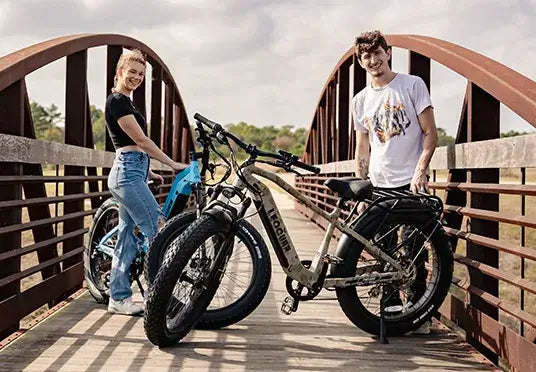
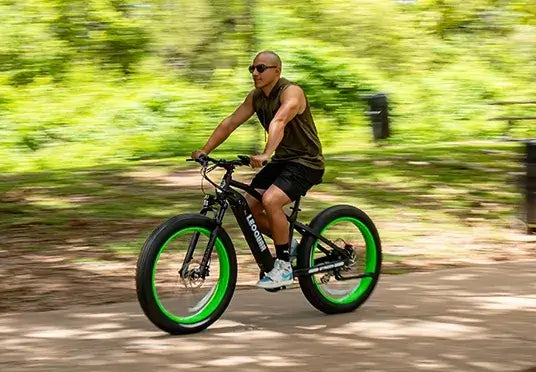
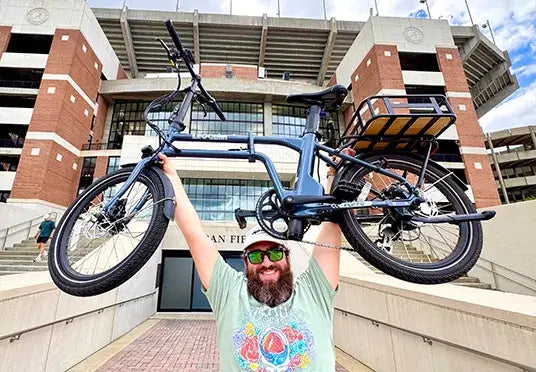
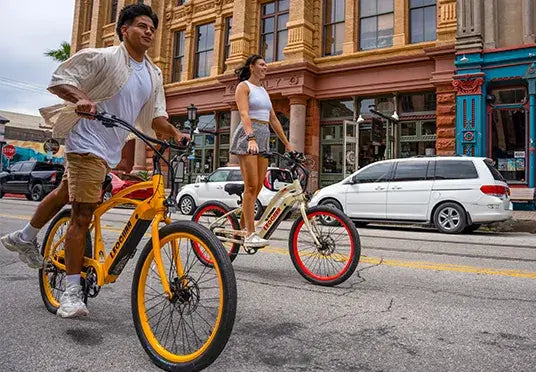
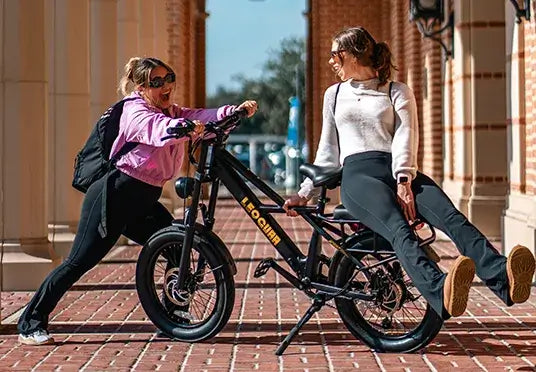
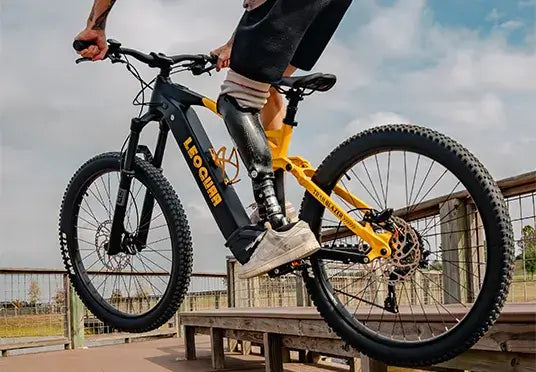
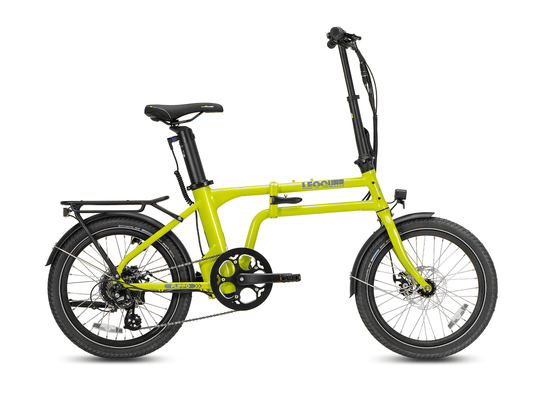
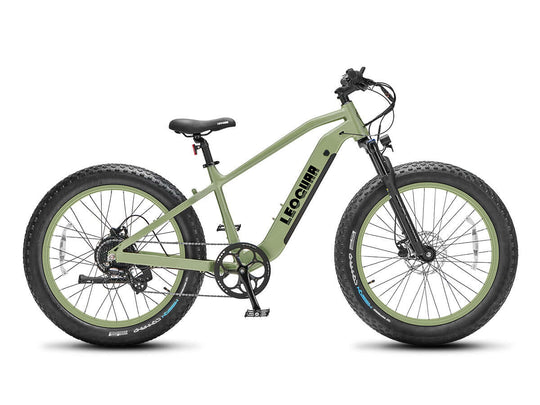
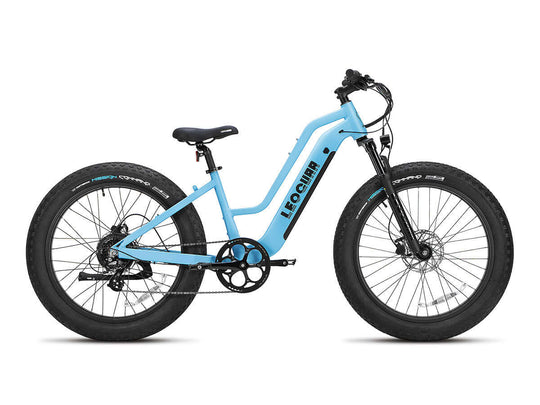
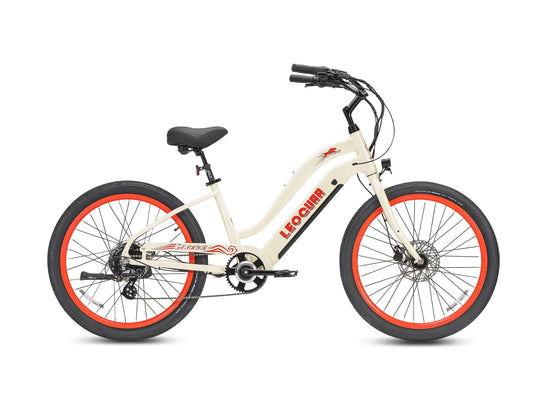
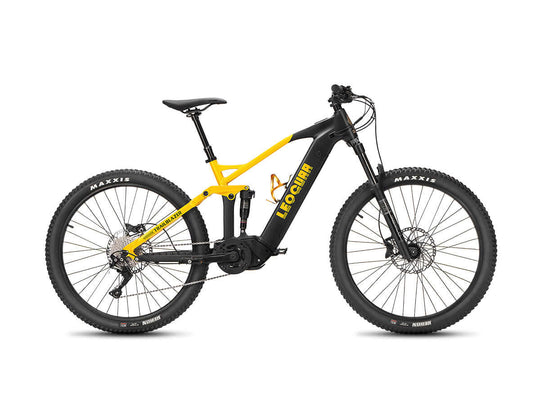
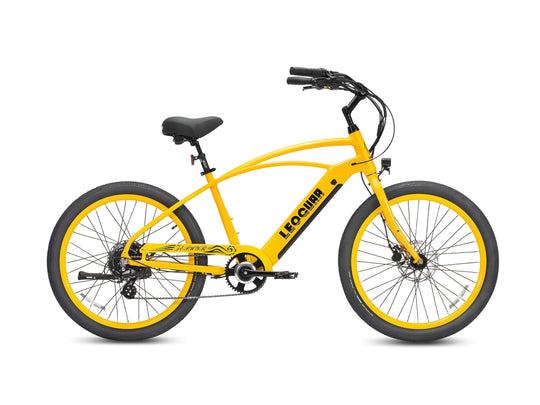
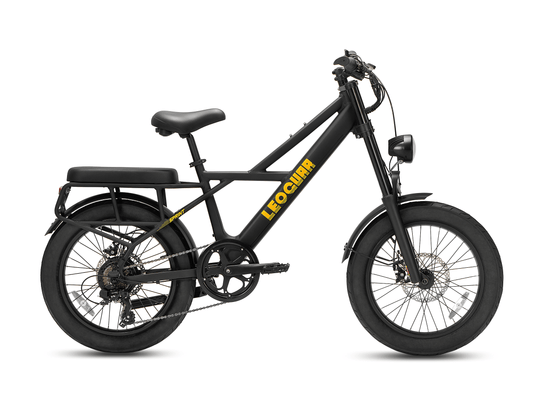
















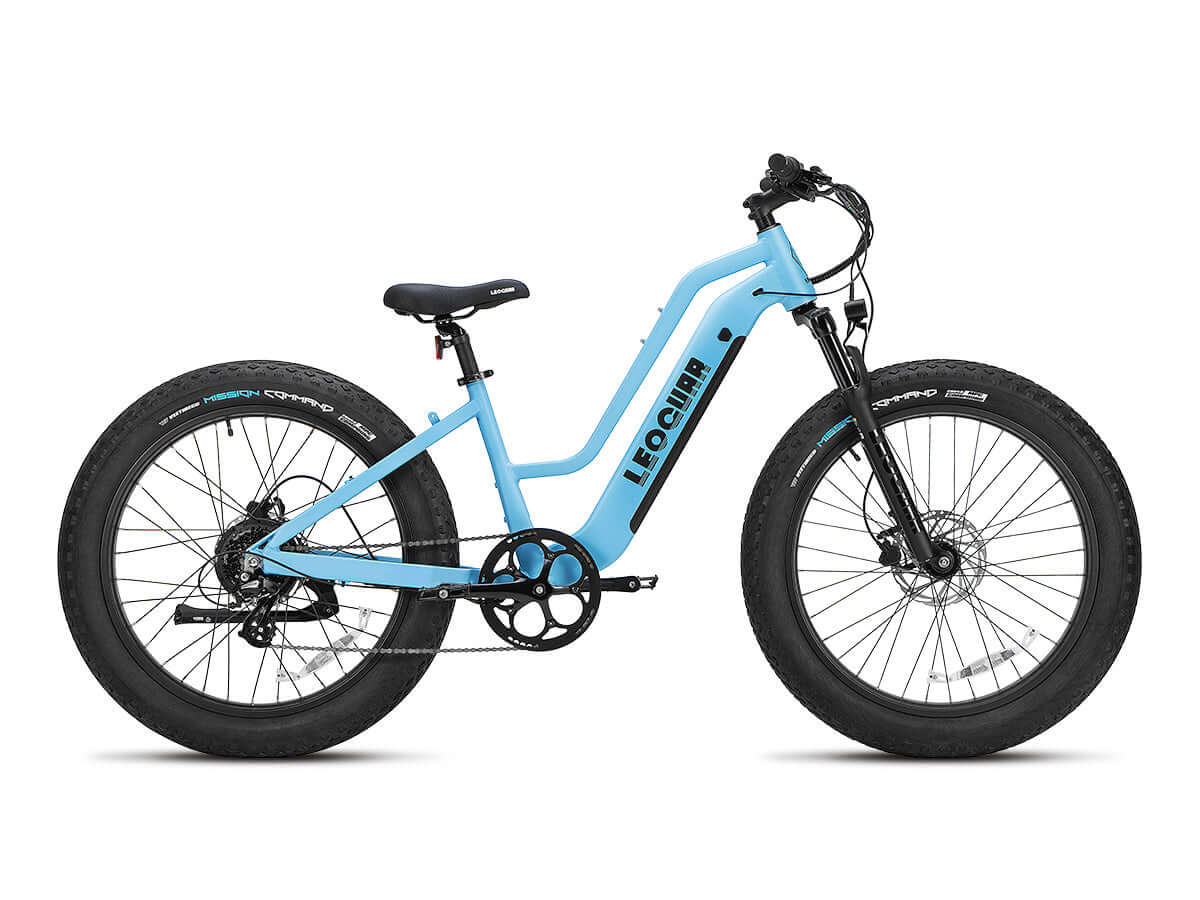








Leave a comment